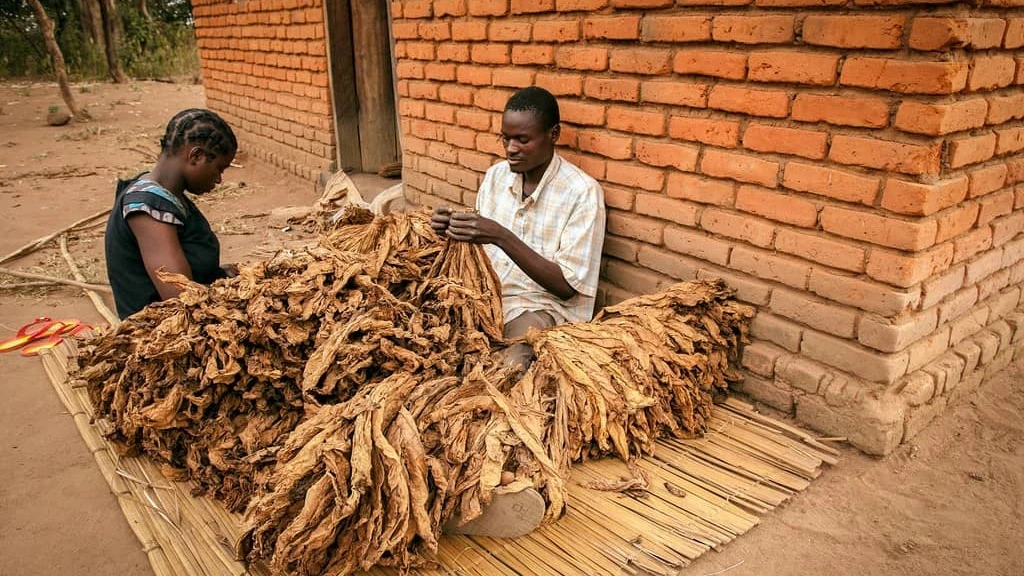
FOR the first time in history, traditional exports has made the record breaking, after
its earning reached US$1 billion mark during the year ended in February 2024, thanks to increased reforms by the ministry responsible for agriculture.Provisional data by the Tanzania Revenue Authority (TRA) and Bank of Tanzania (BoT) computations show that the major drivers of the increased earnings was sharp growth of foreign exchange from exported tobacco, coffee and cashewnuts.
According to data, exports earnings from traditional exports reached the record highest of US$1,022.7 million at the end of February this year, from US$748 million recorded during the year ended in February 2023.
The amount was a third of total gold exports earnings, nearly three times of the value of exported horticultural products and nearly one-third of earnings from tourism.
The highest growth of exports earning was recorded on tobacco exports, after fetching US$376 million during the year ended in February 2024, which was equivalent to more than a third of total earnings from all traditional exports, compared to US$174 million earned at the end of February 2023.
This achievement resulted from increased production of the crop, of which according to the ministry of agriculture, a total of 122,858 tonnes were produced during 2023/2024 season, more than double of the 60,000 tonnes produced during the previous season.
According to the minister of agriculture Hussein Bashe, the government was targeting US$400 million earnings from tobacco exports during the season, as well as increasing production to at least 200,000 tonnes during the next season (2024/2025) and 300,000 tonnes in 2025/2026.
The increased production resulted from the ministry’s efforts to ensure availability of inputs to farmers as well as adoption of best practices in tobacco farming.
The minister also noted that Tanzania is the second producer of the crop in Africa and currently leading tobacco producer among eastern and southern Africa, followed by Malawi, Mozambique, Zambia and Uganda.
Currently, 95 percent of all tobacco produced in Tanzania is for exports market and the remaining five percent of consumed locally.
BoT/TRA data show the second top earner traditional exports was coffee, which fetched US$234.7 million compared to US$171.3 million recorded in 2023 and US$130 million recorded in 2020.
The increase was caused by the increased production to 81,498 tonnes, slight lower than the government targeted 85,000 tonnes during the year 2023/2024, making it the fourth leading coffee producer in Africa from 66,605 tonnes produced during the previous season.
According to the Tanzania Coffee Board (TCB), the increase of production resulted from enhanced efforts in ensuring access to inputs, introduction of new varieties seedlings, extension services and best practices.
In 2018, the government supported distribution of high-yielding Arabica coffee seedlings which replaced older varieties in existing plantations, which also boosted yields.
In October 2022, another three million new Robusta seedlings were distributed to farmers free of charge under the government’s 2021-2025 coffee development strategy.
According to US foreign agricultural services, in 2023/24, Tanzania’s coffee production is forecast to increase 21 percent to 1.35 million bags due to a recovery from drought conditions and trees entering the most productive period of their three-year yield cycle.
Post estimates 2023/24 season’s exports will increase 13 percent to 1.27 million bags due to higher exportable supplies.
Coffee remains Tanzania’s most important cash crop and contributes indirectly to the incomes of six to seven percent of Tanzania’s total population of 63 million, including more than 40 percent of Tanzania farmers.
The BoT/TRA data also shows that the third largest exports earnings were recorded by cashewnuts, of which US$224 million were recorded, the highest in three years, which was an increase of 10 percent compared to US$202 million earned during the corresponding period.
However, the amount was lower than the historical peak of US$480 recorded in 2020.
According to the market report by the ministry of agriculture and cashewnuts board, released in March, until January 5th, 2023/2024 trade season, total sale of raw cashewnut was 241,477,696 kilogrammes with total value of 443bn/-. The minimum price for cashew was 2,040/- per kilogramme.
The government targeted the harvest of 400 million kilogramme of cashewuts during the 2023/2024 season and 700 million kilogramme during the 2026/2027 season, before reaching at least one billion kilogramme by 2030.
The government, through the ministry of agriculture is also targeting to increase employment opportunities in cashewnuts value chain, increase foreign exchange earnings of between US$7 million to US$10.5 million by 2031.
The exports earnings from cotton slightly increased to US$108 million, compared to US$104 million respectively, due to increased production.
However, the central bank report shows the exports earnings from cloves, sisal and tea declined during the reviewed period.

No comments:
Post a Comment